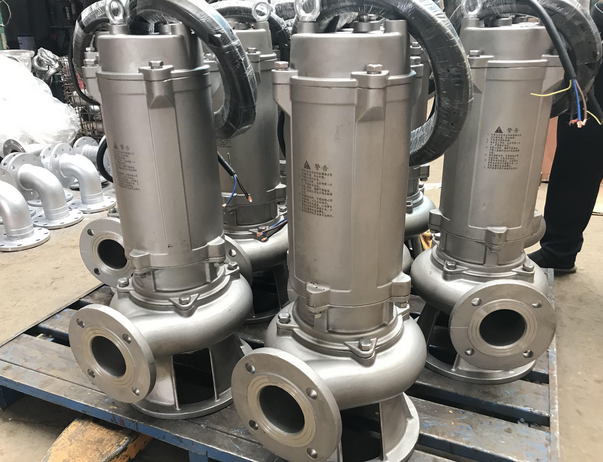Water leakage of submersible pump
The phenomenon of water leakage in submersible pumps is a common problem. Its possible causes and corresponding solutions can be discussed from multiple aspects.
1. Mechanical seal problem
The mechanical seal is a key component to prevent leakage in submersible pumps, and its failure is one of the main causes of leakage. Specific possible reasons include:
Mechanical seal wear: After long-term use, the dynamic and static rings of the mechanical seal will wear, resulting in a decrease in sealing performance, which in turn causes leakage. The solution is to regularly check and replace the worn mechanical seal.
Poor lubrication of the sealing surface: If the amount of lubricating oil on the sealing surface is insufficient, it will cause dry friction or roughening of the sealing end surface, causing leakage. It should be ensured that the height of the lubricating oil surface is higher than the mechanical sealing surface of the dynamic and static rings.
Improper installation of mechanical seals: If the installation is too tight or too loose, it will destroy the dynamic and static balance of the seal and cause leakage. During installation, it should be ensured that the axial movement of the shaft is moderate, and the interference between the auxiliary seal and the shaft should also be moderate.
2. Bearing problem
Damage to the bearing may also cause leakage in the submersible pump. After the bearing is damaged, the rotor of the pump will produce periodic vibrations, which will affect the sealing effect of the mechanical seal. The solution is to regularly check the wear of the bearings and replace damaged bearings in time.
3. Pump body and pipeline problems
Poor pump body sealing: After the pump body seals such as sealing rings and gaskets are aged or damaged, the pump body will not be sealed tightly, which will cause leakage. Aging seals should be replaced regularly.
Leakage at pipeline connections: If the pipeline connections of the submersible pump, such as flanges and threaded connections, are not sealed tightly, leakage will also occur. During installation and maintenance, ensure that the connection is well sealed.
4. Working environment and operation problems
Harsh working environment: If the conveyed medium contains corrosive substances such as acids, alkalis, and salts or solid particles, it will accelerate the aging and wear of the seals and cause leakage. Appropriate sealing materials and pump types should be selected according to the characteristics of the medium.
Improper operation: Improper operations such as frequent start and stop, overpressure operation, etc. will also affect the sealing performance of the submersible pump. Operations should be carried out strictly in accordance with the operating procedures to avoid problems caused by improper operation.
5. Solutions
For the leakage of submersible pumps, the following solutions can be adopted:
Regular inspection and maintenance: Regularly inspect and maintain the submersible pump, including checking the wear of mechanical seals, bearings, seals and other parts, and replacing damaged parts in time.
Enhance lubrication: Ensure that there is sufficient lubricating oil on the mechanical seal surface to prevent dry friction and hair pulling.
Standardized installation and operation: When installing the submersible pump, ensure that the installation is standardized and the sealing is good; when operating, strictly follow the operating procedures to avoid problems caused by improper operation.
Select appropriate materials and pump types: Select appropriate sealing materials and pump types according to the characteristics of the conveying medium to improve the corrosion resistance and sealing performance of the submersible pump.





